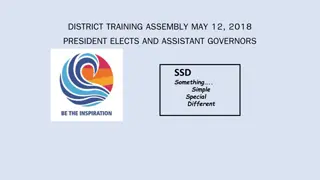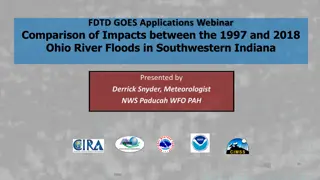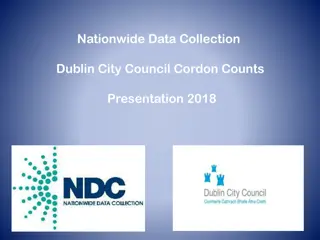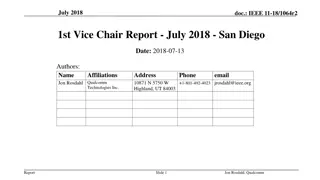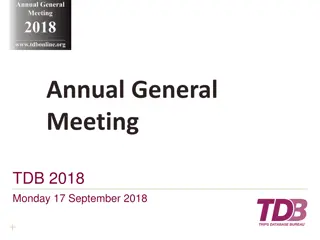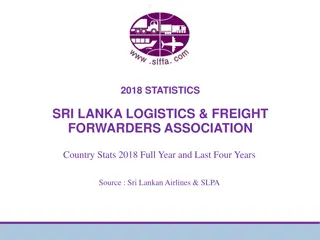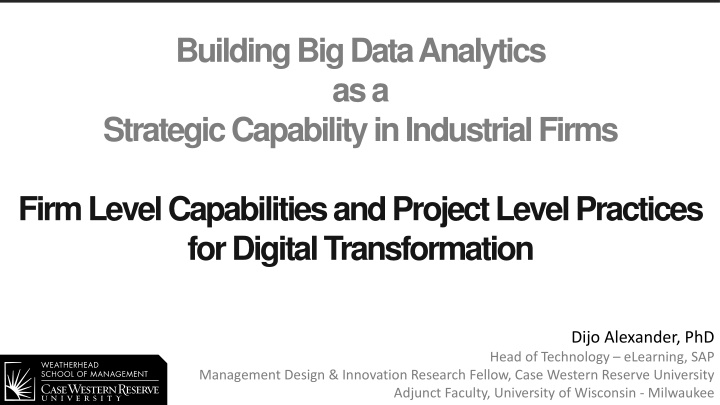
Strategic Capability of Big Data Analytics in Industrial Firms
Explore the strategic importance of big data analytics in industrial firms through firm-level capabilities and project-level practices. Uncover motivations, challenges, and opportunities surrounding big data investments, along with key research questions in this domain.
Download Presentation

Please find below an Image/Link to download the presentation.
The content on the website is provided AS IS for your information and personal use only. It may not be sold, licensed, or shared on other websites without obtaining consent from the author. If you encounter any issues during the download, it is possible that the publisher has removed the file from their server.
You are allowed to download the files provided on this website for personal or commercial use, subject to the condition that they are used lawfully. All files are the property of their respective owners.
The content on the website is provided AS IS for your information and personal use only. It may not be sold, licensed, or shared on other websites without obtaining consent from the author.
E N D
Presentation Transcript
Building Big Data Analytics as a Strategic Capability in Industrial Firms Firm Level Capabilities and Project Level Practices for Digital Transformation Dijo Alexander, PhD Head of Technology eLearning, SAP Management Design & Innovation Research Fellow, Case Western Reserve University Adjunct Faculty, University of Wisconsin - Milwaukee
Motivation. Data is the new oil, and analytics is the combustion engine. Peter Sondergaard, Gartner Data is the new science. Big Data holds the answers. Pat Gelsinger, VMWare Software is eating the world. Marc Andreessen, Andreessen Horowitz
Motivation. Data is the new oil, and analytics is the combustion engine. Peter Sondergaard, Gartner Almost 60% of big data initiatives fail. Data is the new science. Big Data holds the answers. Pat Gelsinger, VMWare --Gartner, November 2016 Software is eating the world. Marc Andreessen, Andreessen Horowitz
Motivation. Data is the new oil, and analytics is the combustion engine. Peter Sondergaard, Gartner We were too conservative. The failure rate is closer to 85%. --Nick Heudecker, Gartner, November 9, 2017 Data is the new science. Big Data holds the answers. Pat Gelsinger, VMWare Software is eating the world. Marc Andreessen, Andreessen Horowitz
Problem of Practice. 6 6 %+ 2 out of 3 US Companies have invested in Big Data 47 B + Tech Startups US$ 47B Total Investments in 2017 Uneven Returns from Big Data Investments Source: Gartner (2014); Bughin et al. (2018); Kane et al. (2017); Kelly (2014); Manyika, et al. (2016); Ransbotham (2017)
Opportunity. Scale Speed Big Data Specificity Automation
Challenges. Management Commitment Domain Expertise Technology & Resources Beta Business Model Data Customers
Challenges. Management Commitment Domain Expertise Technology & Resources Beta Business Model Data Customers Traditional Industrial Firms can Overcome Most of these.
Research Questions. How do traditional industrial firms reorganize and transform themselves to successfully exploit the emerging opportunities of big data analytics? What are the factors that affect the success of big data analytics initiatives at firm level? What extend do factors such as mobilization and market integration contribute to the success of big data analytics efforts at firm level? Quantitative Study How are project level big data practices established, identified, stabilized, distributed and integrated across the firm? Qualitative Study Qualitative Study
Theoretical Lens. Dynamic Capabilities Theory Fusion of Business and Technology Big Data Landscape is Evolving Framework of Analysis: Sense Seize Reconfigure Sense: Path-creating Search (Ahuja & Katila, 2004) Seize: Sensemaking for assimilating insights (Weick et al., 2005) Reconfigure: Transform / Translate / Integrate into Action (Teece, 2007) Dynamic Capabilities (Teece et al., 1997; Eisenhardt & Martin, 2000) Internal & Extemporal Absorptive Capacity (Zahra & George, 2002)
Big Data Landscape. Dynamic Environment
Analytics Maturity. Capability Domain Analytics Competency Descriptive Predictive Prescriptive Cognitive Analytics Capability Tools and Technology Centric Methods and Techniques Centric Customer and Use Case Centric Domain Expertise Centric Customer Cognitive Method Prescriptive Predictive Tool Descriptive Maturity
Organizational Routines. Mobilization (Re)Orientation Experimentation Integration Value Addition Learning & Collaboration Technology & Resources Insights
Findings. Big Data Analytics is NOT a Technology problem NOR an Information Technology (IT) implementation.
Findings. Big Data Analytics is NOT a Technology problem NOR an Information Technology (IT) implementation. Rather, it is a company-wide business initiative.
Findings. Organizations Utilize Analytics Projects Run Analytics Organizational Practices Facilitate Operational Routines to Emerge Agility and Speed of Organizational Change Moderate Analytics Success
Findings. Organizational/Strategic Level Organizational culture of collaboration & learning Knowledge management system Business model innovation Operational/Tactical Level Agile project management Experimentation & empowerment Knowledge sharing & integration
Practice Recommendations. Develop an evidence-based decision system Less intuition, more experimentation Facilitate organizational knowledge management and experiential learning Learn, unlearn, relearn Collaboration and mentoring Be purposefully market-driven Better customer experience Solution-based business model
Future Research. Longitudinal study to monitor digital progression Pair up quantitative and qualitative studies to extract deeper routine level factors Game based experimental study on how operational practices are influenced by organizational capabilities. Explore more into the business model challenges
Thank You! Questions? dijo.alexander@sap.com




